The Ford
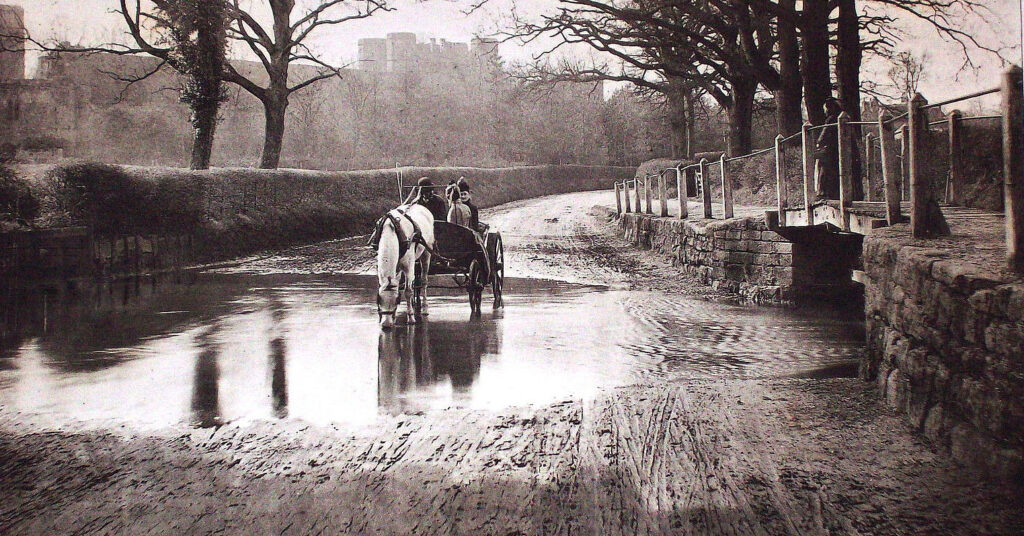
The ford, a photo dated 1895 but showing the bridge that was replaced in 1893
The ford has existed for as long as a trackway or road was first built across the watercourse that flows through the Abbey Fields valley; its location with the road rising on either side suggests this has always been the natural course of the stream at this point. The course of the current road was probably created by the construction of the castle diverting an existing road (a straight-line extension of Clinton Lane) around it, but it can be argued that no such road would have been built so close to the castle, thus the road and ford may have a later date, perhaps after the castle’s slighting. The Fish estate map of 1692 shows the ford with an adjacent footbridge, perhaps a little to the east of the existing bridge.
When a footbridge was first constructed is unknown, but it was replaced in 1893. The design was by Town Surveyor Mr Purnell jnr, and it was not to cost more the £20. It was said that the bridge ‘must not be objectionable in appearance’.
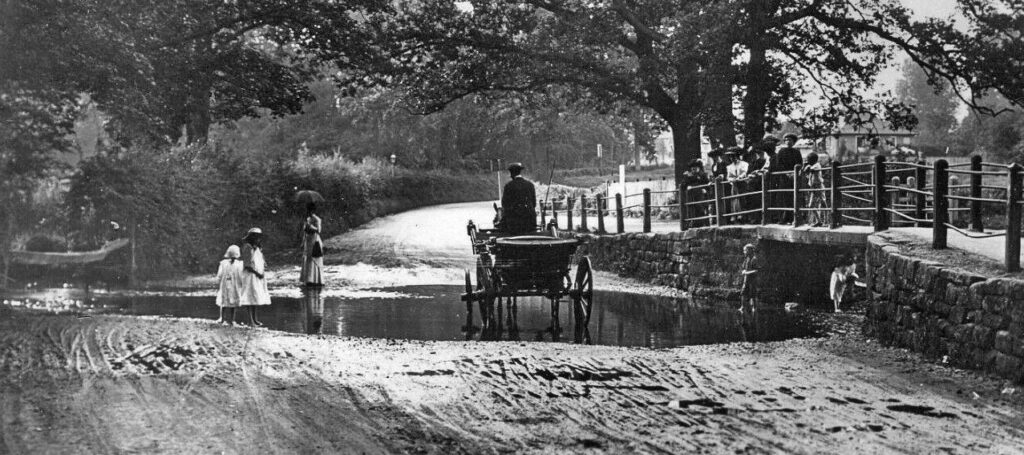
An undated but Edwardian view showing the replacement footbridge of 1893.
A depth post was installed by the AA in 1912.
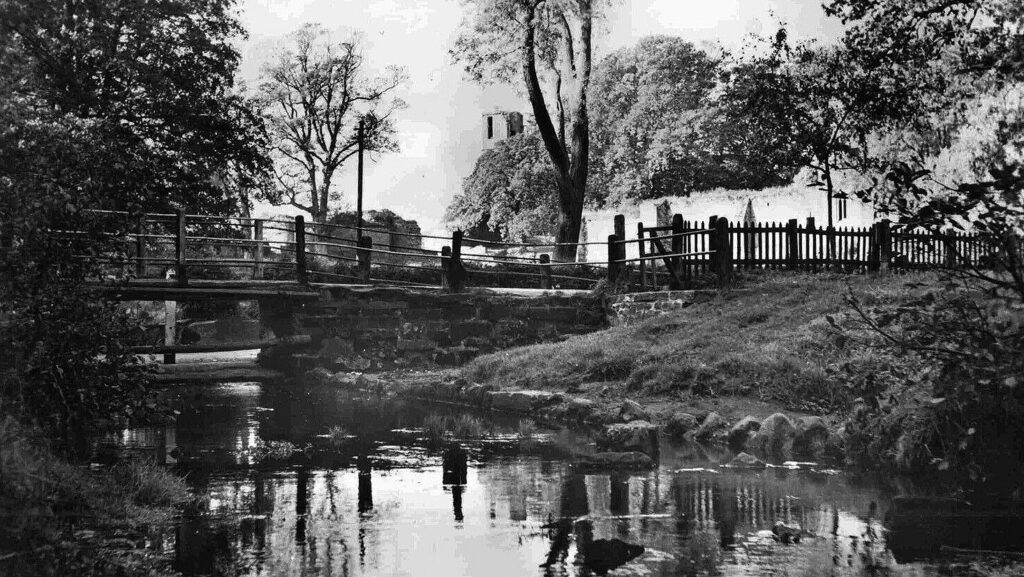
This unusual view shows the AA depth post added in 1912. The stone edging to the right may suggest an attempt at reducing bank erosion, but is likely to have been installed to help the water flow into the intake for the swimming pool, built in 1896, extreme right.
Remembering that roads were made with a top surface of sand and gravel, the flow of water continually caused problems by washing it away and it needed regular repairs. By 1922, the road was so low that the normal depth of water across it was between 12 and 18 inches, and so a new foundation was constructed that reduced it to just two or three. At the same time, the footpaths either side of the bridge were improved. This led to an enormous increase in traffic using the road, reported in 1926 as being by ‘two or three hundred per cent’. I have not yet discovered when a hard surface was installed for the first time.
Heavy rains of course still caused problems, and those encountered by a driver in 1927 sound familiar. He was driving a brand new Morris-Oxford car from its factory to Manchester when he drove it into the flooded ford, the water covering the driver’s seat. It was three in the morning; his cries for help were soon heard by locals, and a Police Inspector threw him a rope so he could escape. The car was recovered after daybreak.
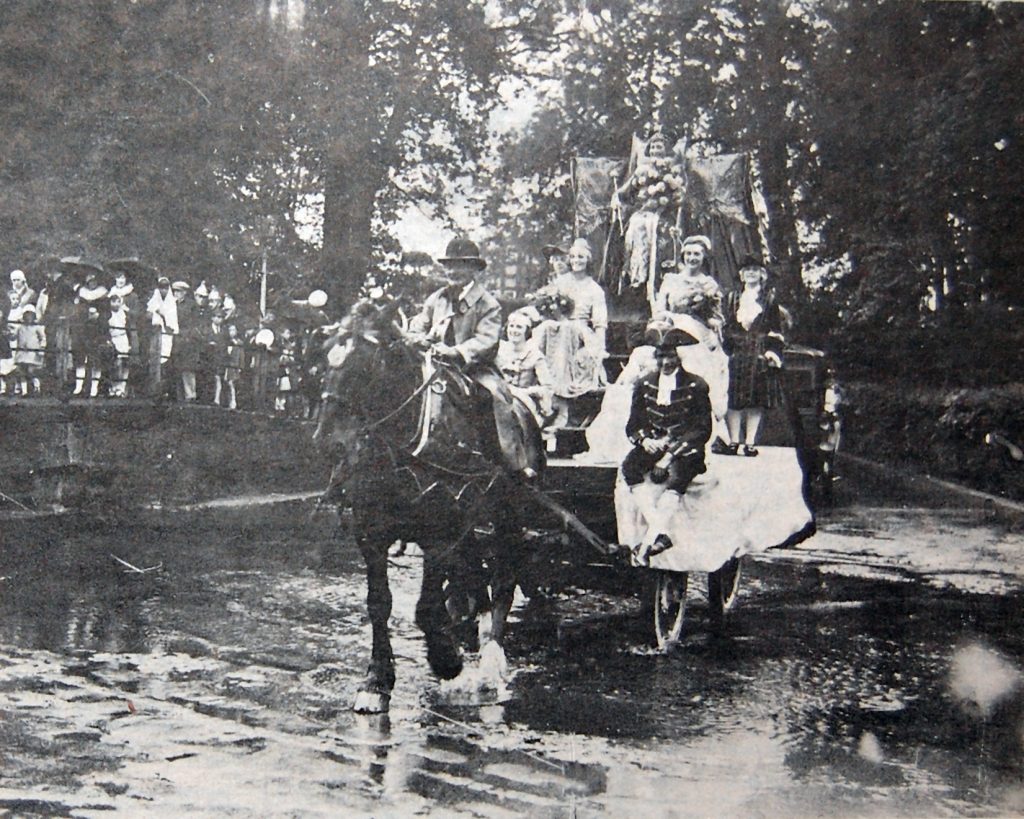
Kenilworth’s carnival procession passes through the ford, 1931 (Leamington Courier)
The next development was, perhaps surprisingly, in wartime. An unusually dry summer in 1940 saw the ford dry up for the first time in living memory and so the opportunity was taken to raise the road and install pipes to take the water, thus ending its life as a proper ford.
These pipes were replaced in 1959 for a larger diameter, raising the road a little more. The footbridge was demolished and replaced by the current bridge in 1962, and included work by Kenilworth stonemason, Arthur Smith.
There have been other fords within Kenilworth, including at Bridge Street, Common Lane and Park Hill, that have been bridged in 18thc, 1881 and 1844 respectively, but being in a very sensitive site between the Castle and Abbey Fields which places restrictions on any adjoining development, it seems the Castle Ford will never be bridged – not that anyone really wants it to be!
Gallery
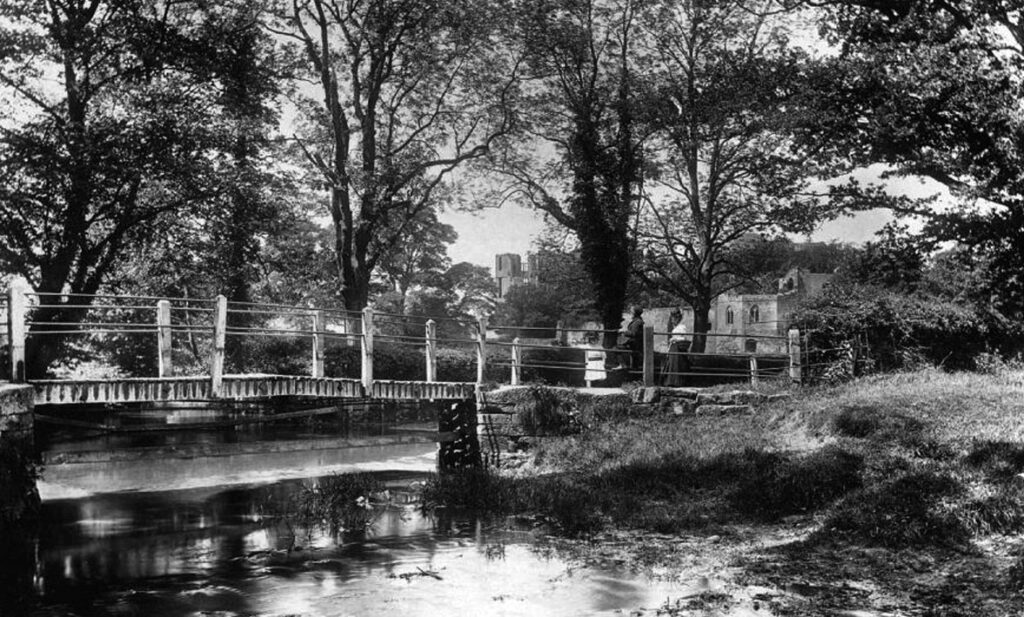
A view dated 1892 showing the soon-to-be replaced bridge, and no stones lining the bank on the right hand side. (Our Warwickshire)
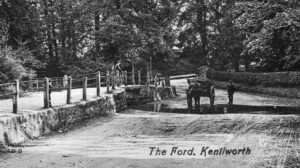 |
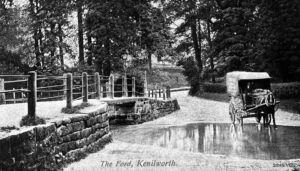 |
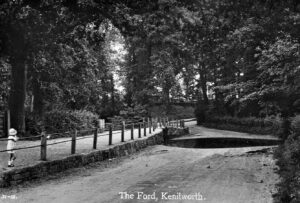 |
Three similar views showing the water at its regular level before piping was introduced. The upper two are pre the installation of the depth post in 1912. |
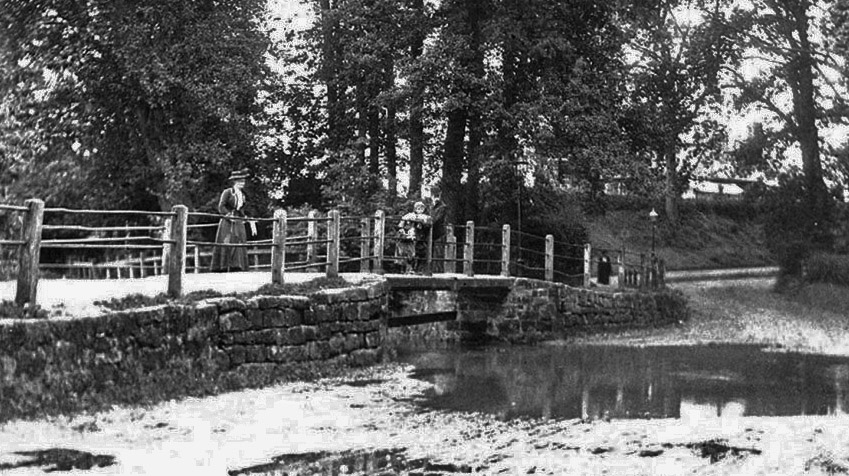
A typical view taken between 1893 and 1912. (Our Warwickshire)
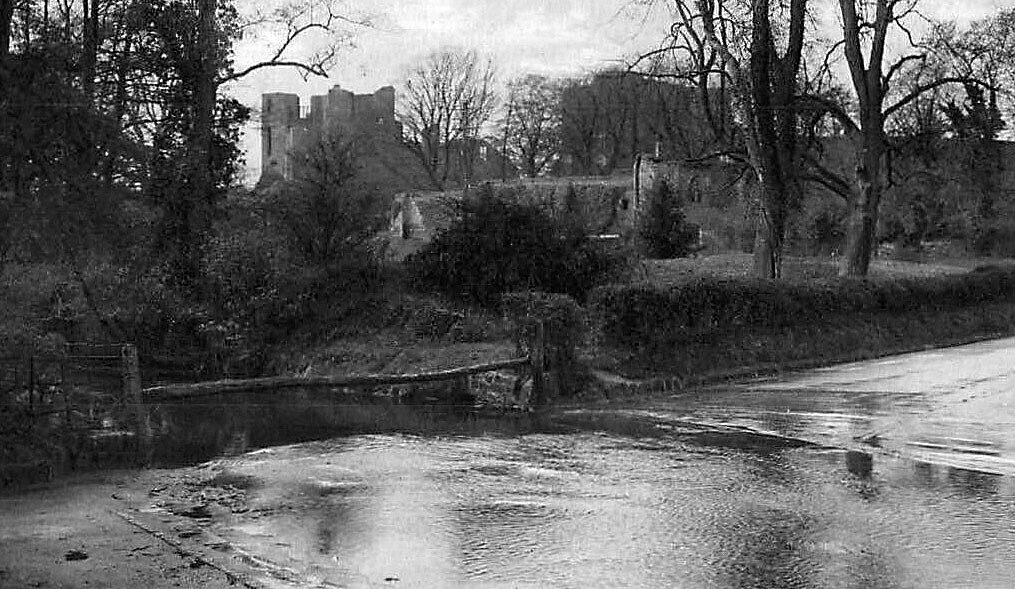 |
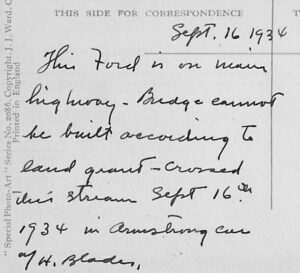 |
This postcard has 16th September 1934 written on it, and appears to show edging to the ford on both sides. A barrier has been introduced on the Castle side to deter vehicles from venturing upstream! Interestingly the reverse claims a ‘bridge cannot be built according to land grant‘.
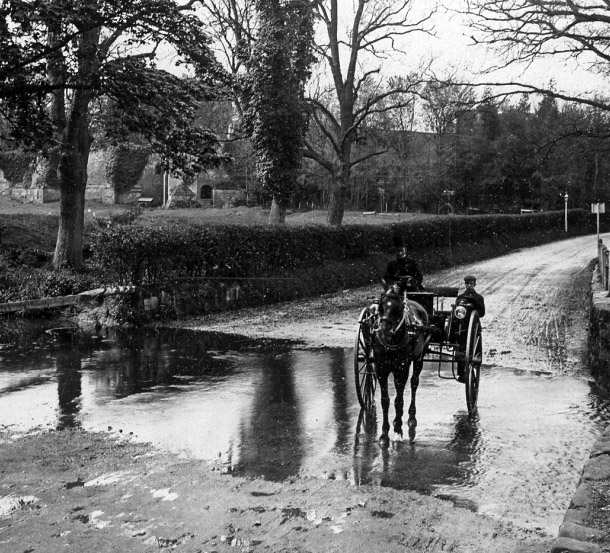
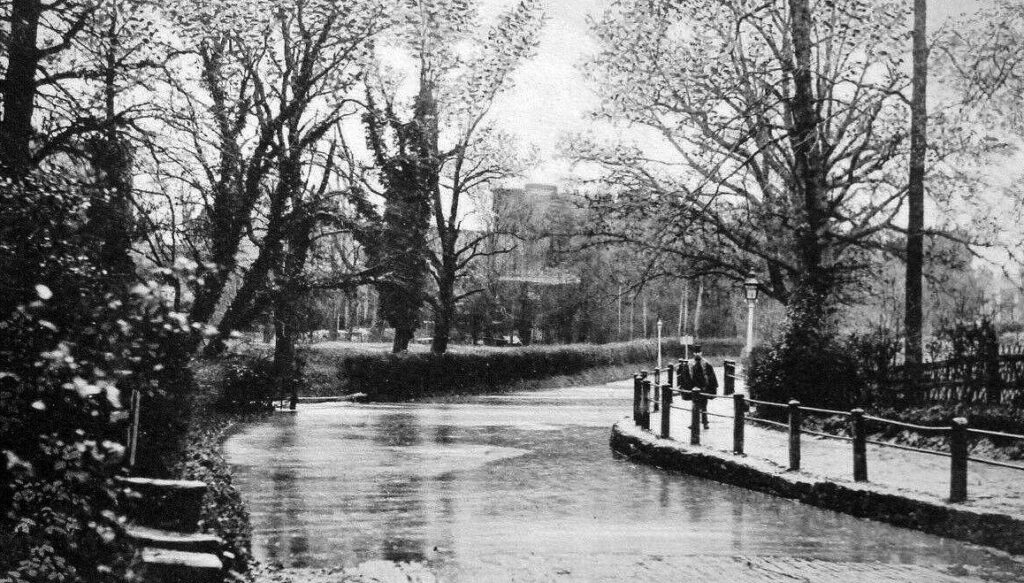
The Ford in flood; note the height of the water compared to the barrier on the Castle side.
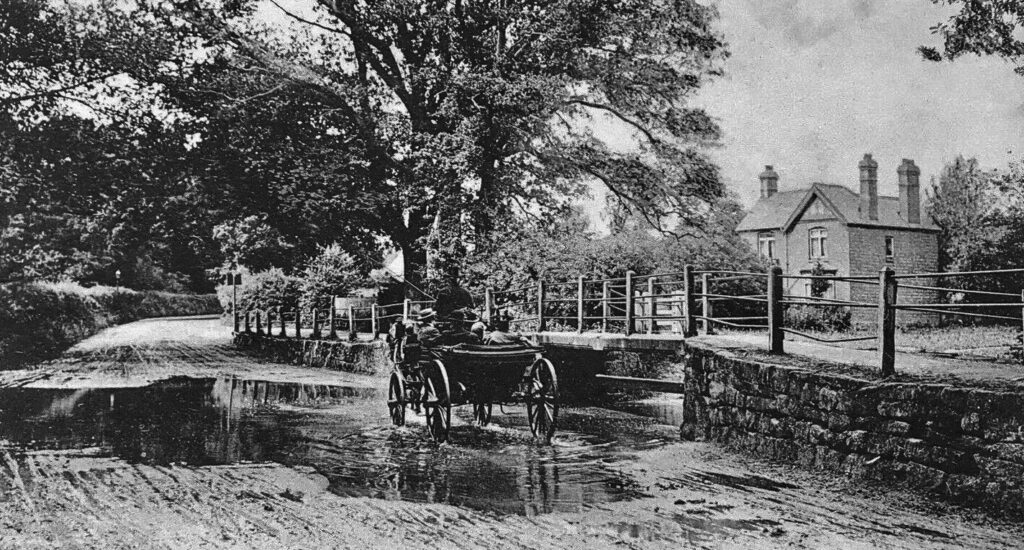
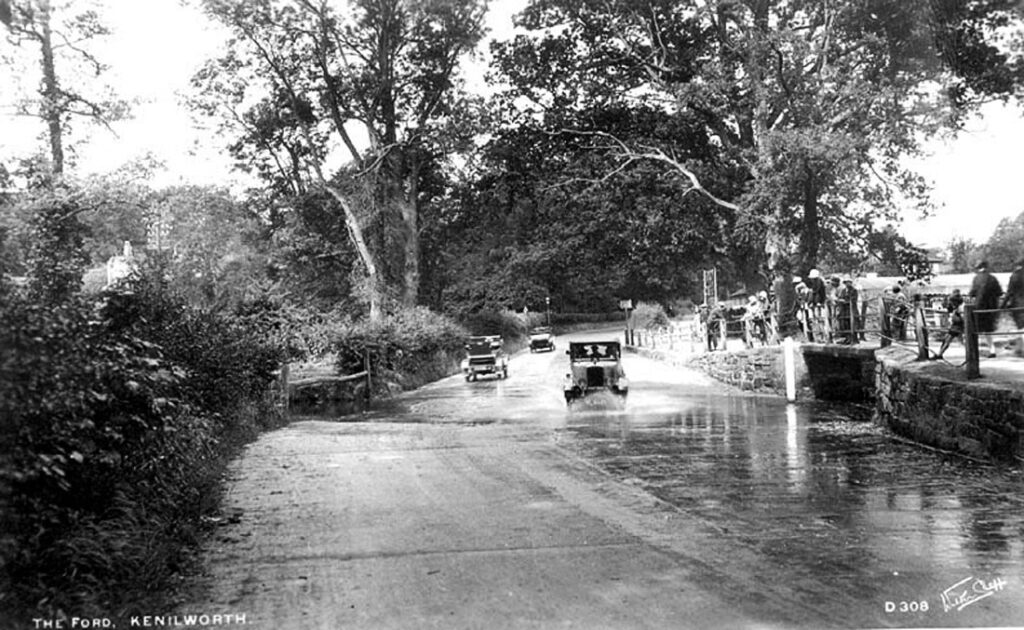
A 1930s view (Our Warwickshire)
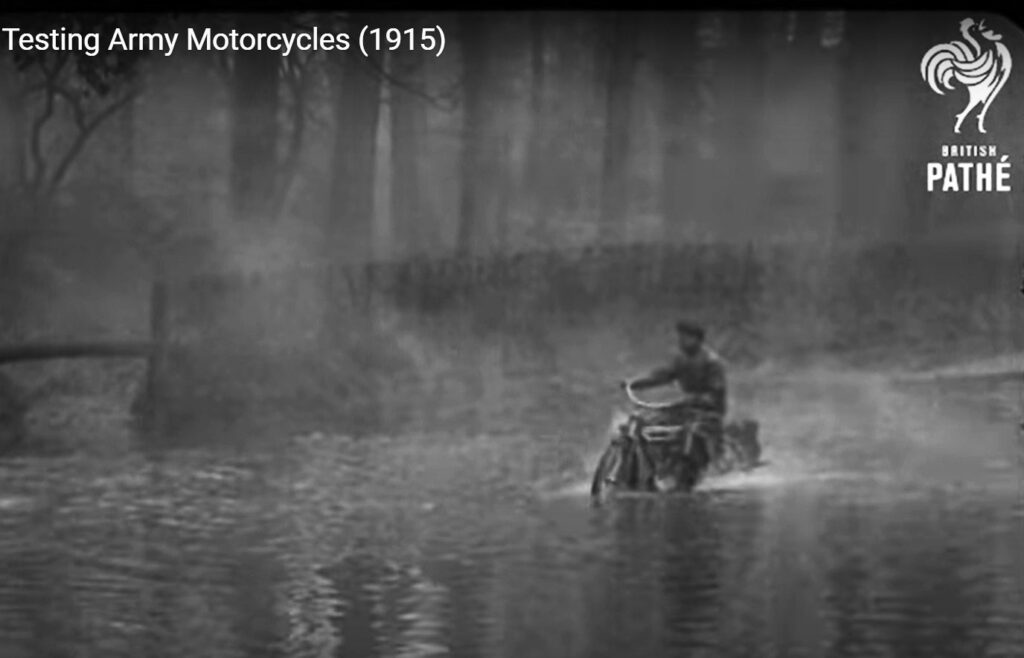
Pathe News film of Army motorcycle testing at the ford, 1915. (Please note the film is printed back to front!)
Two contributions by the Kenilworth History and Archaeology Society: